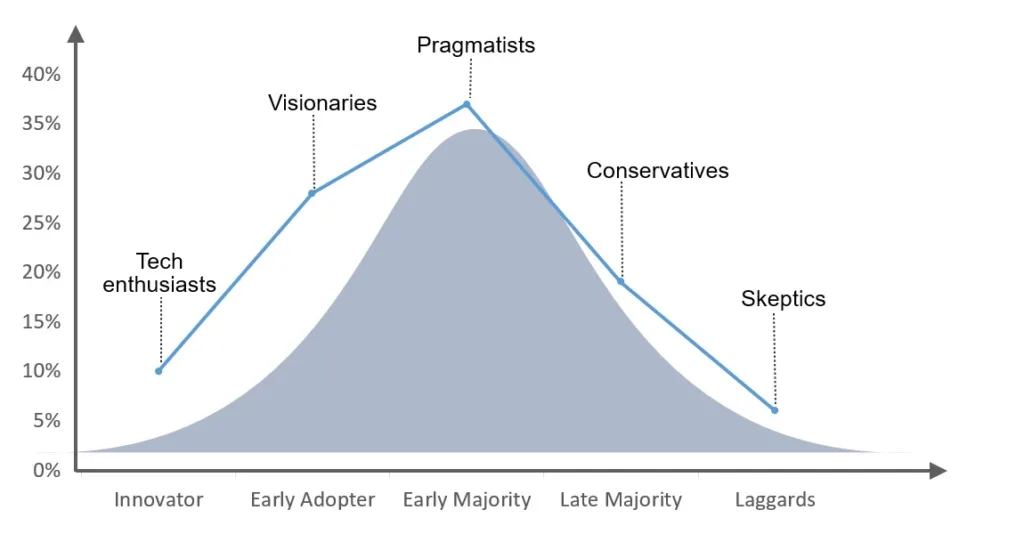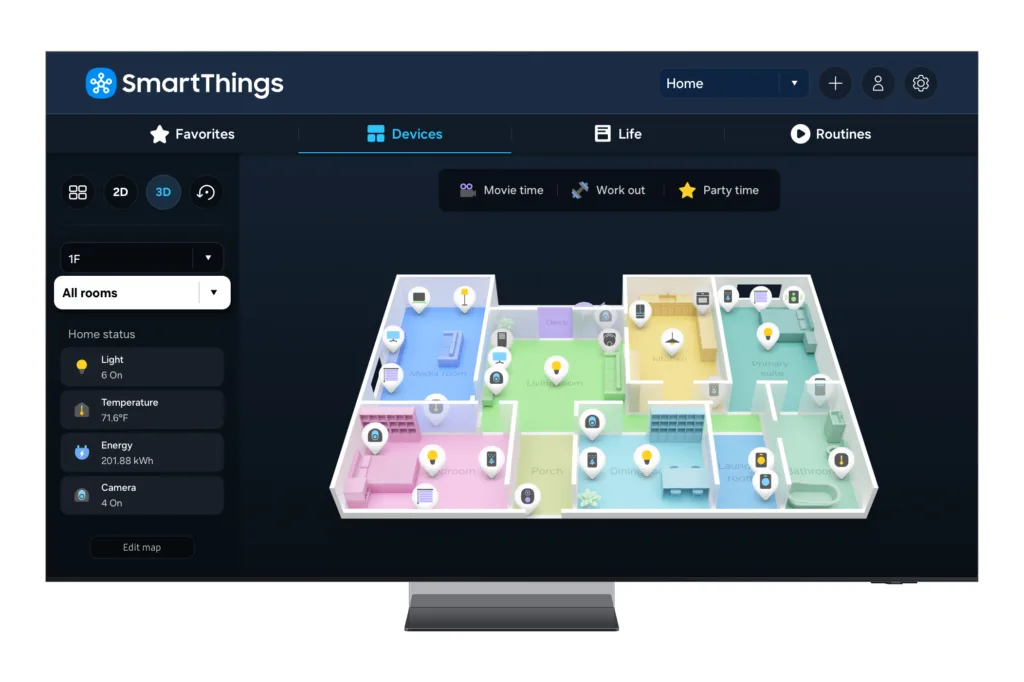Smart home adoption has reached a new stage on the adoption curve.
It’s no longer just the domain of tech enthusiasts and visionaries: in fact, a sizeable segment of the mainstream population is beginning to automate their homes. Known as the ‘early majority’, they are less tech-savvy and prioritize convenience, affordability and ease of use. Led by the tech giants, the smart home industry is taking steps to please these new users.
Mass Market Warms to Smart Home Devices
The smart home has entered a significant new phase of evolution, as the early majority of mainstream consumers becomes its biggest group of customers, according to Parks Associates1. These people have different needs to the tech-savvy innovators and early adopters who were the initial enthusiasts.
This is an important moment for the smart home’s march into all of our lives, as Everett Rogers’ (1962) classic research2 into the diffusion of innovation shows. Typically, the first two groups of people to adopt a new technology are tech enthusiasts and visionaries. They accept the normal bugs and issues with products — in fact, they don’t mind puzzling out solutions. They enjoy giving feedback to the manufacturer and teaching future users about a product.
Until recently, these so-called ‘innovators’ and ‘early adopters’ were the biggest groups of smart home owners. But today the two groups jointly account for only 39% of smart home device owners, according to Parks Associates research1. The ‘early majority’ has surpassed both individual groups, reaching 37% of smart home device owners (see chart below).
37% Of Smart Home Device Owners Identify as Early Majority Tech Adopter

The ‘early majority’ are pragmatists. While they are curious about smart home technology, they are also cautious with their time and money. They prioritize pragmatic benefits over technology features and complex value propositions. These benefits are clearly visible in the types of products they are buying: security and energy management products.
It helps that these products are often sold or promoted by trusted companies. For instance, energy companies, including smart home portfolio company Nextera Energy, are installing smart meters for customers (see our July 2023 blog on smart homes and energy management). What’s more, insurance companies are partnering with smart home security companies. Policy discounts and lower deductibles are powerful incentives to drive smart home adoption.
Getting Easier to Use
But these new users also want simple interfaces. This makes interoperability even more important. The Matter standard (see also this blog) has been a big help, and this year the major smart home platforms (Amazon, Google, Samsung and Apple) all announced big steps to improve interoperability and enable further home automation.
By improving interoperability, the platforms make it easier to add devices (even third-party devices) to the smart home dashboard and control them. Google is even working to turn more of its devices into smart home hubs. According to the company, “Chromecast with Google TV, select panel TVs with Google TV running Android 14 or later, and eligible LG-branded TVs will also become hubs for Google Home.”3
Broadly speaking, living in a smart home is getting easier. For instance, homes with multiple devices can become confusing and difficult to manage. Both Amazon and Samsung have tried to solve this problem with a map view visual interface that displays a (3D) map of the user’s home, with devices grouped according to the rooms in which they’re installed. The new interface (see Samsung’s example below) makes it easier to change things like lighting, temperature, air quality, and energy consumption in each room.

Advanced automation, meanwhile, allows people (in the case of Google developers) to create routines. For example, when you put your phone in bed time mode, the software can tell the smart home platform to dim the lights, lock the front door, and close the curtains. Amazon and Google have both announced similar enhancements.
Even Apple is working on smart home improvements, though no formal announcements have been made. Aside from the high-end Vision Pro (which we discussed in a previous blog), the company is reportedly working on a revamped Apple TV set-top box with a built-in camera for FaceTime video conferencing and gesture-based controls. The company has also discussed automating household functions and is working on a lightweight smart display. It is even exploring the idea of making personal robotic AI devices, according to Bloomberg.5
Growth Ahead
To date, however, pragmatism, convenience, ease of use, and affordability are the smart home platforms’ best bets for convincing the mass market to adopt more smart home devices. With smart homes coming to your neighborhood, more growth is ahead.
1 Middle Market: Lowering barriers tot he smart home / Parks Associates, developed for Skybell (2024)
2 Diffusion of innovations, Everett Rogers (1962).
3 https://9to5google.com/2024/05/15/chromecast-with-google-tv-will-soon-act-as-a-google-home-hub/
4 https://news.samsung.com/global/samsung-launches-3d-map-view-feature-based-on-smartthings-and-ai

